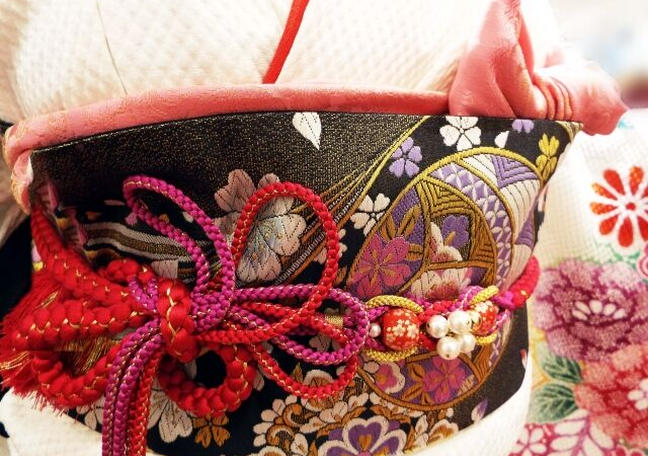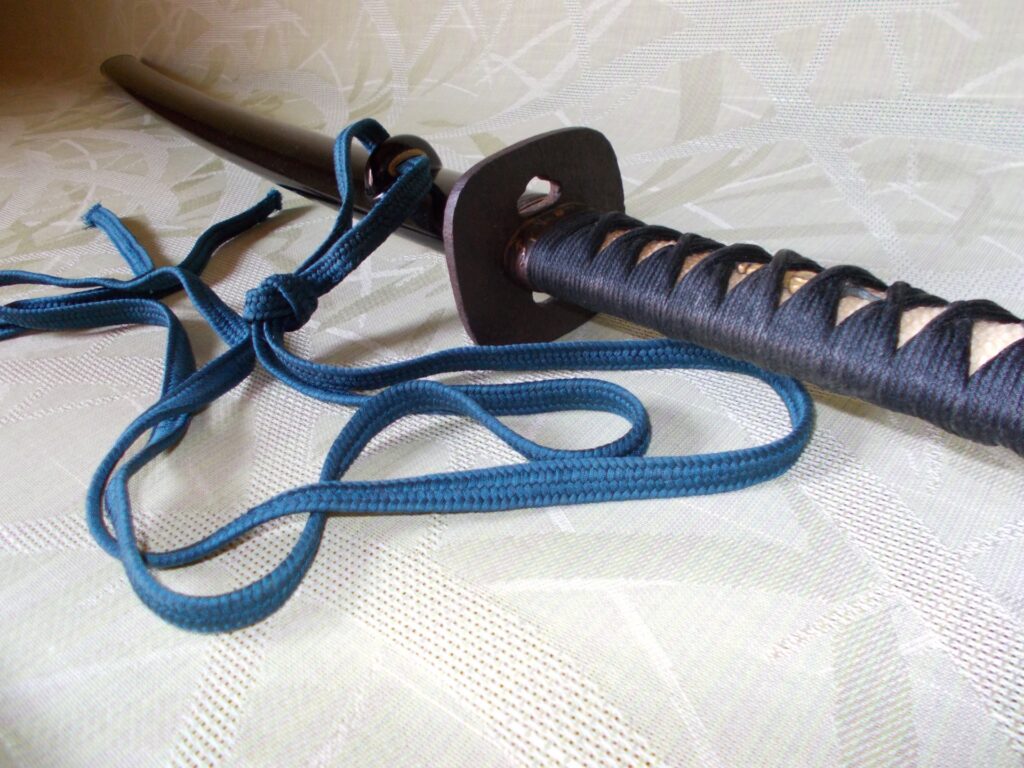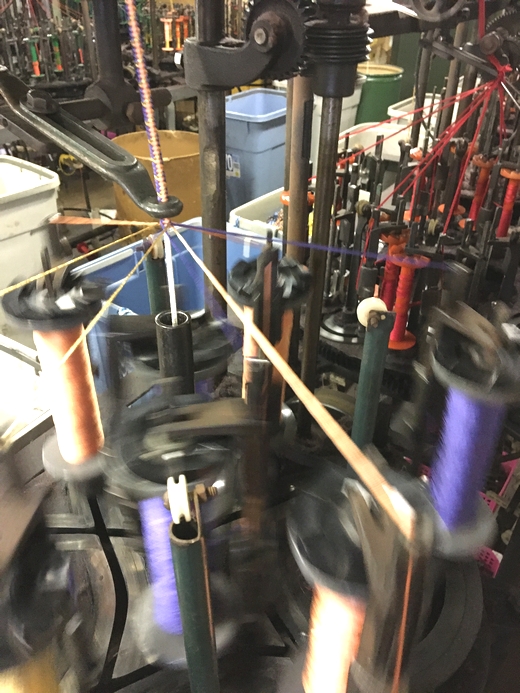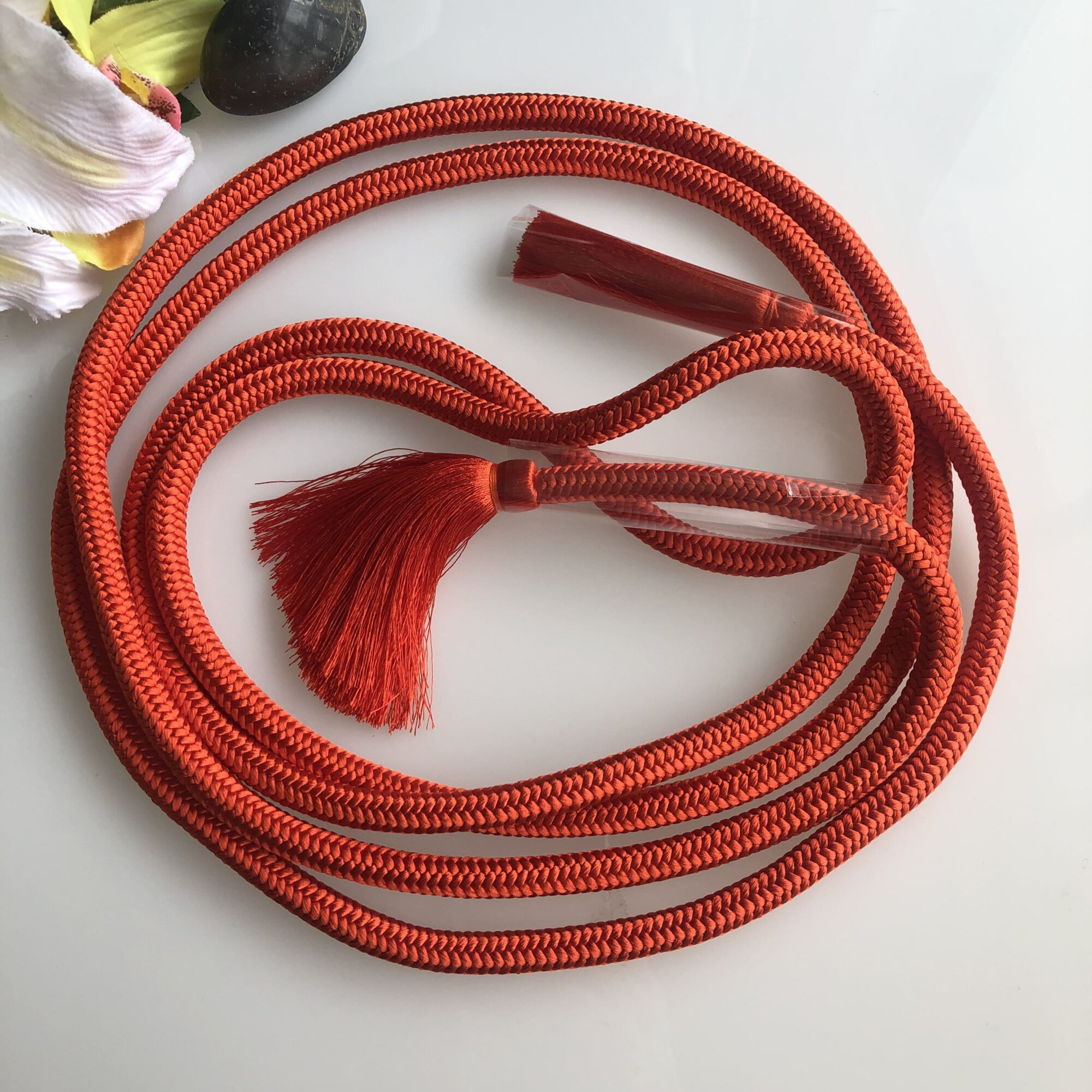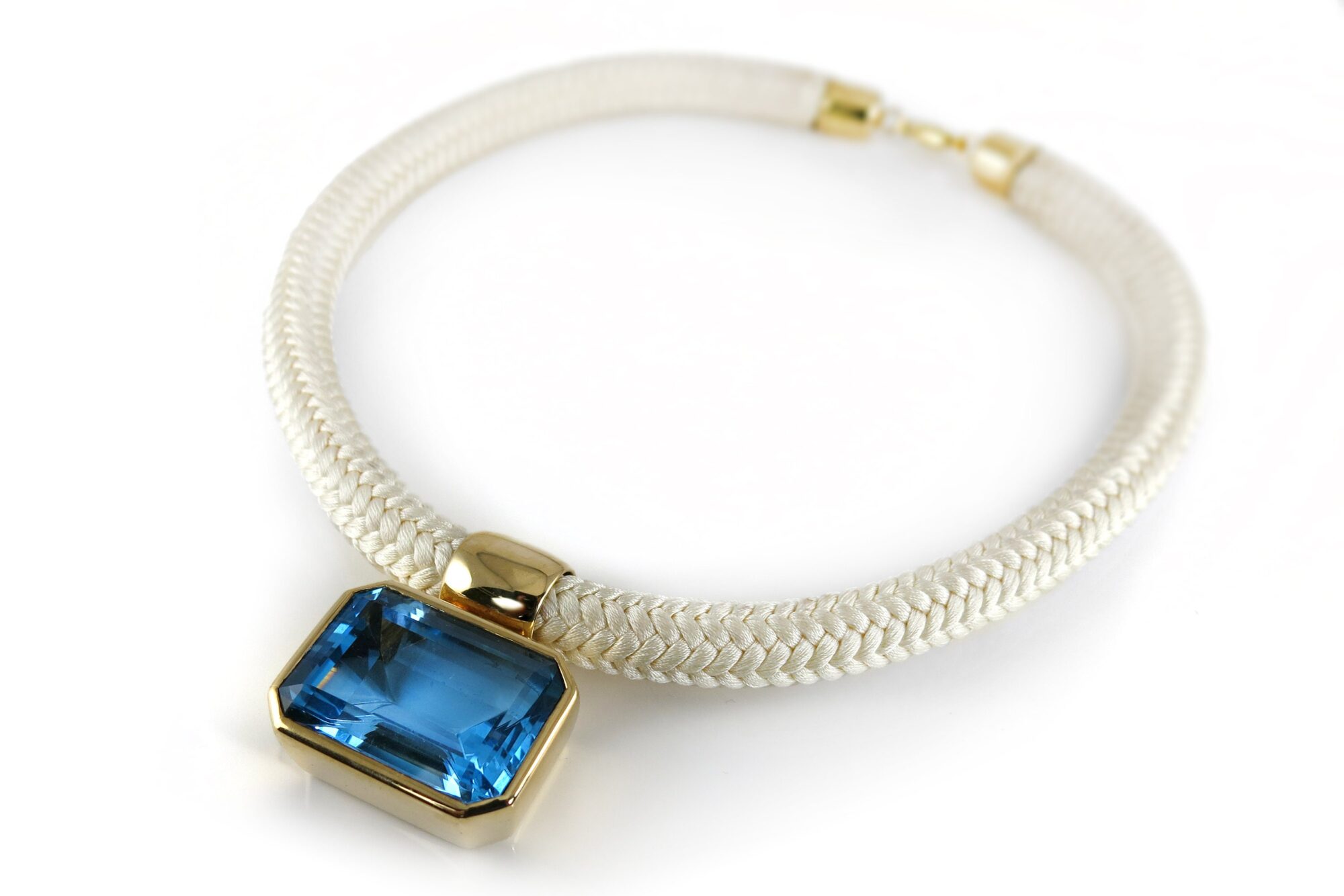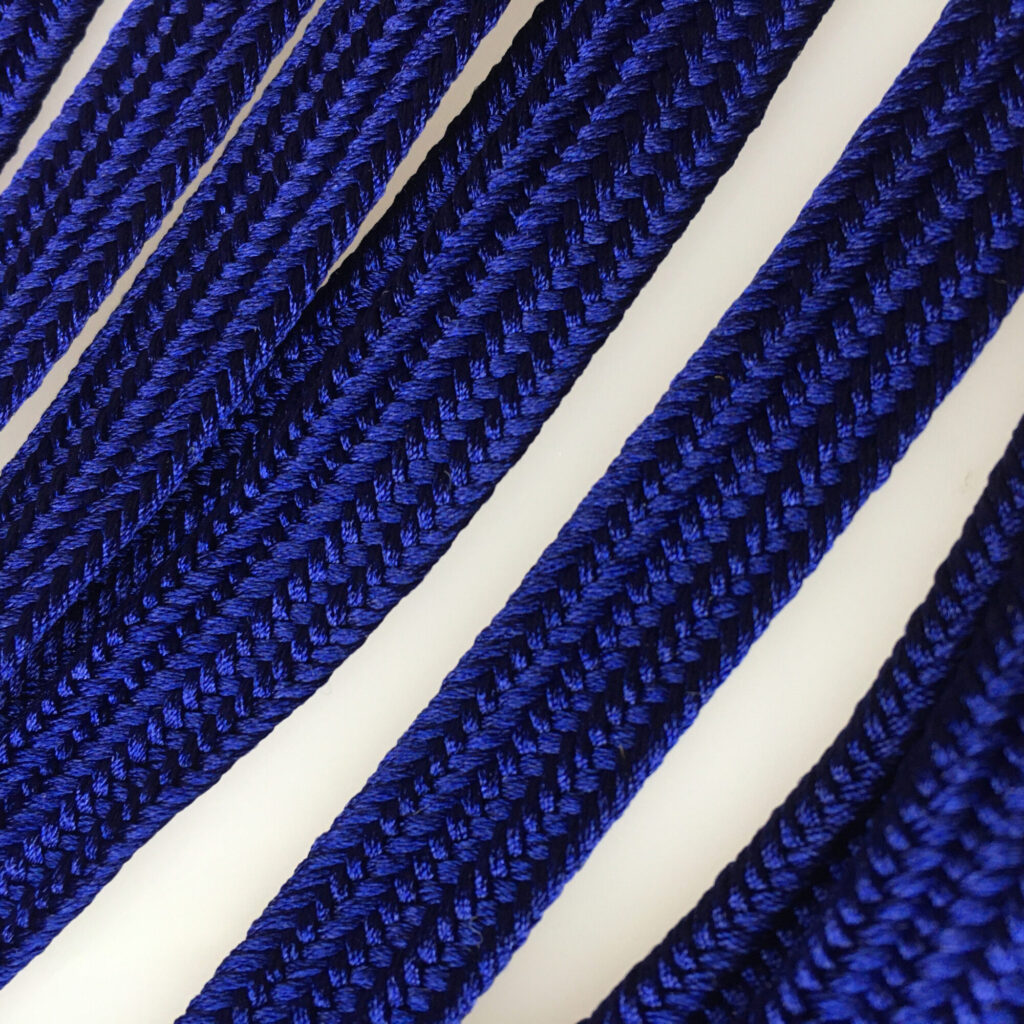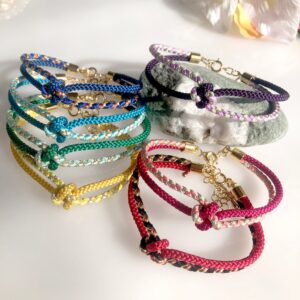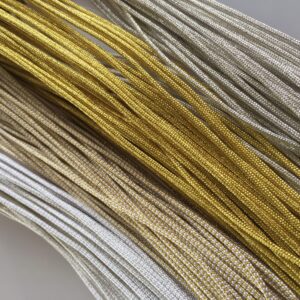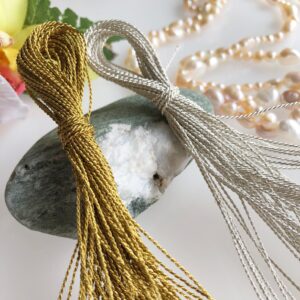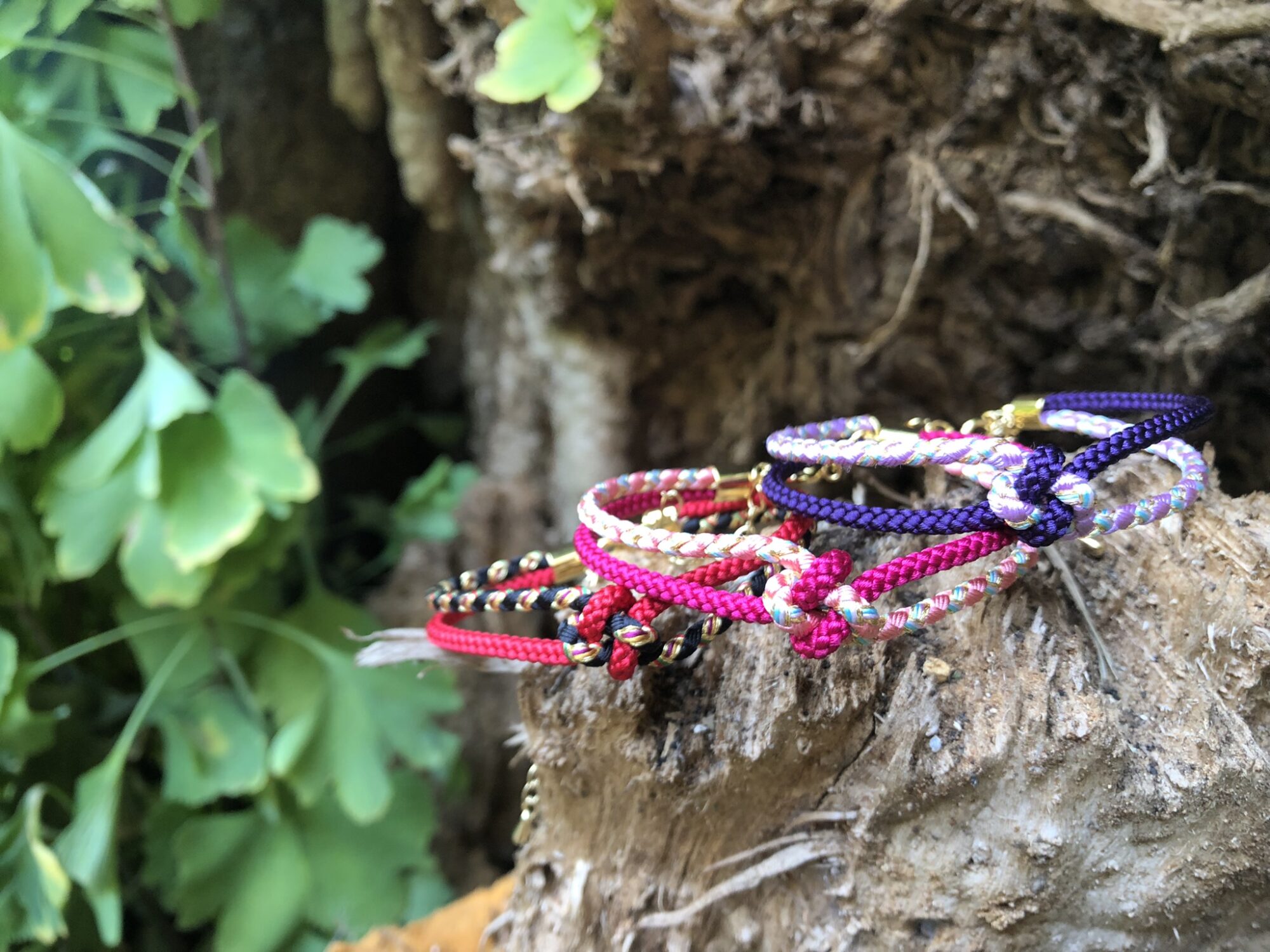
The art of Japanese braiding
Kumihomo Story
Kumihimo, meaning “gathered threads” in Japanese, is a fascinating traditional craft that has a rich history in Japan. Initially developed as a sturdy cord for armor and swords, this intricate technique has stood the test of time and continues to be appreciated today.
In ancient times, when Japan was embroiled in feudal warfare, samurai warriors relied on Kumihimo cords to secure their armor and fasten their swords. The art of Kumihimo was not only functional but also played a significant role in identifying the social status and rank of the warriors on the battlefield.
As the era of swords drew to a close, Kumihimo gradually shifted its purpose and found a new significance in traditional Japanese clothing. Kimonos, the iconic and elegant garments worn by men and women alike, became incomplete without the beautiful braided cords adorning them. These cords, intricately woven using Kumihimo techniques, added an extra touch of refinement and grace to the overall ensemble.
Throughout the ages, Kumihimo has evolved into various styles and patterns, with artisans employing materials such as silk, cotton, or synthetic fibers to create their masterpieces. The designs can range from simple and understated to intricate and highly detailed, with each piece requiring skillful hands and meticulous attention to detail.
Today, Kumihimo is cherished in Japan and has gained recognition worldwide as a captivating artistic expression. Many enthusiasts have taken up the craft and continue to explore and innovate, merging traditional techniques with contemporary designs.
The beauty of Kumihimo lies in its aesthetic appeal and the sense of cultural heritage it represents. Each braid holds a story, a connection to the past, and a testament to the craftsmanship passed down through generations.

History of Kumihimo
Because kumi-himo had been an everyday item for Japanese people, research on its history did not progress until recently. However, due to the efforts of enthusiastic researchers, the ancient technique of kumi-himo has been brought to the forefront of attention and is now better understood in the present day.
One of the techniques associated with kumi-himo is finger weaving, known as kuteuchi. This technique was widely used for creating various types of cords, especially during the Edo period (1603-1867). Many cords for armors were intricately made using this braided cord technique, showcasing the craftsmanship and attention to detail that defined the era.
Kuteuchi, with its intricate patterns and complicated weaving process, played a significant role not just in the practical aspect of creating cords but also in the cultural and artistic expressions of the time. These cords were often used for decorative purposes, symbolizing status, and were coveted for their exquisite designs.

In the Edo period (1603-1867), with the concentration of samurai in Edo, the demand for braided cords exploded, and the slow production methods of the past could no longer cope. Therefore, artisans invented a device to produce Kumi-himo more efficiently. The “Takadai,” “Marudai,” and “Ayatake-dai,” which we can still see today, are uniquely Japanese braiding machines.
These braiding machines revolutionized the production of Kumi-himo, a traditional Japanese braiding technique that has been cherished for centuries. With the invention of these devices, samurai and other noblemen could obtain finely crafted cords much faster, ensuring a steady supply for their lavish garments and accessories.
The Takadai, Marudai, and Ayatake-dai are all examples of intricate braiding machines meticulously crafted by skilled artisans. The Takadai, meaning “high stand,” is a tall, vertical wooden frame with multiple adjustable poles and weighted bobbins. This machine allows for the creation of complex patterns and designs by controlling the tension and positioning of the cords.
On the other hand, the Marudai, meaning “round stand,” consists of a round wooden top with holes where the bobbins are inserted. Beneath the top is a weighted base, providing stability as the braiding process unfolds. This machine is particularly suitable for creating thicker cords and more straightforward designs.
Lastly, the Ayatake-dai is a portable version of the braiding machine, designed for ease of use and convenience. It features a compact and collapsible frame, allowing artisans to take their craft wherever they go.
These braiding machines are a testament to the ingenious craftsmanship and ingenuity of Japanese artisans during the Edo period. Despite being developed centuries ago, they continue to be used today, preserving the traditions and techniques of Kumi-himo. The intricate patterns and designs produced using these machines are a reflection of the rich cultural heritage of Japan and serve as a reminder of the artistic skill and dedication of its people.
So, the Takadai, Marudai, and Ayatake-dai remain not only as functional braiding machines but also as cherished symbols of Japanese culture and craftsmanship. They serve as a link between the past and the present, allowing us to appreciate the beauty and complexity of Kumi-himo, a timeless art form that continues to captivate hearts around the world.
Today, the art of Japanese braided cords embodies a captivating blend of tradition and innovation. There are two splendid ways in which these cords are crafted: the revered “hand-kumihimo” technique, where each cord is meticulously braided by skilled artisans using age-old tools, and the remarkable “machine-kumihimo” method, where a majestic contraption known as the “braiding machine” weaves its magic.
Hand-kumihimo stands as an embodiment of the esteemed craftsmanship both within the borders of Japan and across the globe. However, due to the considerable amount of time and resources required, it is the machine-braided cords that predominantly grace our collections. Yet, let it be known that even with the aid of these contrivances, every step of the process, from selecting and preparing the finest yarns to skillfully setting the threads onto bobbins, still calls for the artistry and expertise of our master craftsmen, honoring the rich heritage of traditional hand braiding.
We are always on the lookout for innovative and creative techniques to enhance the art of kumi-himo while respectfully upholding its rich cultural heritage. Our unwavering commitment lies in exploring more rational and aesthetically pleasing approaches to this traditional craft. By integrating modern elements with the essence of the past, we strive to find a harmonious balance that not only preserves the authenticity of kumi-himo but also captivates contemporary enthusiasts.
In conclusion, our dedication to kumi-himo goes beyond mere craftsmanship. With a deep respect for tradition and an unwavering commitment to innovation, we continuously seek rational and beautiful ways to enhance this ancient art form while staying true to its cultural roots. Together, we can inspire generations to come and ensure the enduring legacy of kumi-himo in the modern world.
Edouchi-himo (8-strand round cord)
It is fascinating to delve into the intricacies of Japanese culture and craftsmanship. One such traditional item that showcases the attention to detail and artistry is the “yatsu-gumi” cord. This exquisite cord, also known as “yatsu-gumi,” gets its name from the eight balls or weights that are used to tie the thread together.
The yatsu-gumi cord finds its application in various aspects of Japanese daily life, including drawstrings and costumes. The versatility of this cord is truly remarkable, as it can be made in different thicknesses ranging from 1 mm to 10 mm. This wide range allows for the creation of cords that are suitable for various purposes.
Yotsu-gumi (4-strand round cord)
This type of kumihimo, known as the “four-ball” kumihimo, is characterized by the use of four weights to tie the threads together. The resulting braids are large and fluffy, giving them a distinctive and eye-catching look. This particular method of braiding has been employed for a significant period of time and finds its application in various areas such as netsuke strings, sifuku, and haori cords.
The choice of materials used in this technique is quite diverse, allowing for endless creative possibilities. Silk, with its lustrous and luxurious texture, is a popular choice for those seeking an elegant and refined finish. Acrylic, on the other hand, offers a more affordable alternative without compromising on durability and versatility. Rayon, known for its smoothness and sheen, adds a touch of sophistication to the braids. Additionally, silk spun yarn can be utilized, which lends a unique character to the kumihimo, creating an interplay of texture and color.
Karauchi himo (16-strand round cord)
The Art of Japanese Braiding
Japanese braiding, known as Kumihimo, is a craft that dates back centuries. One particular technique, called the 16-ball braid, stands out for its unique characteristics and versatility. This braid is renowned for creating a smooth surface and is crafted using twice as many balls as the Edouchi braid.
The 16-ball braid not only offers a sleek and polished appearance but also provides enhanced durability compared to the traditional eight-strand braid. Its construction allows for added strength, making it a preferred choice for various applications. For instance, it is often used for ornamental purposes in shrines, temples, and portable shrines, adding an exquisite touch to these sacred spaces.
Beyond its religious significance, the 16-ball braid finds utility in the outdoor and apparel industries as well. Its strong and stable structure makes it ideal for decorative elements in outdoor settings, enduring the whims of nature while maintaining its beauty. Additionally, the fashion world embraces this braiding technique to adorn garments, creating intricate patterns and embellishments that captivate the eye.
What makes the 16-ball braid truly fascinating is its hollow structure. This design allows for the insertion of different materials, such as wire, enabling the braid to serve additional functions. By incorporating wire, the braid gains flexibility and can be molded into various shapes, further expanding its potential applications. This versatility provides designers and artisans with endless possibilities to explore and innovate within their respective fields.
The art of Japanese braiding is a testament to the country’s rich cultural heritage and craftsmanship. The intricate techniques passed down through generations continue to inspire awe and admiration. The 16-ball braid, with its smooth surface, durability, and potential for creative exploration, showcases the ingenuity and meticulousness of Japanese artisans.
Whether adorning sacred spaces, enhancing outdoor aesthetics, or adding exquisite details to fashion and design, the 16-ball braid remains an icon of Japanese artistry, adding beauty and functionality in equal measure.
Note: The information provided above is based on the context provided and may not represent every aspect of the technique. The art of Kumihimo involves various styles and variations, each with its own unique characteristics and applications.
Tsuka ito
Tsuka ito & Odoshi Ito
Tsuka-ito is a braided cord used to wrap around the handle of the sword. It serves both a practical and ornamental purpose, enhancing the grip of the wielder while also adding a decorative touch to the overall appearance of the weapon. Traditionally made from silk, Tsuka-ito is meticulously woven in a way that provides both strength and flexibility.
There are different widths available for Tsuka-ito, including 7mm and 10mm, allowing sword enthusiasts to choose the size that best suits their preferences. The width of the Tsuka-ito can affect the overall feel of the sword in hand, with some individuals favoring a thinner cord for a more delicate grip, while others prefer a wider cord for a more substantial grip.
Odoshi-ito, it is a vital component in samurai armor construction. This silk or cotton-hemp lacing plays a crucial role in linking together the intricate plates of the armor. Not only does the Odoshi-ito provide structural stability, but it also allows for subtle movement, enabling the armor to expand and contract slightly with the wearer’s body.
With a range of widths available, from 3mm to 15mm, samurai armor craftsmen have the flexibility to select the most appropriate size for their specific design. Additionally, for those seeking a unique touch, special orders can be made for mixed colors of Odoshi-ito. Lengths of 30 meters or more can be customized, providing armor makers with the freedom to unleash their creativity and personalize each piece.
The choice of materials for Odoshi-ito is also diverse, including silk, acrylic, rayon, and silk spun yarn. Each material has its own unique characteristics, offering different levels of durability, texture, and appearance. Whether one prefers the traditional elegance of silk or the modern practicality of synthetic fibers, there is an Odoshi-ito option to suit every preference.
In summary, both Tsuka-ito and Odoshi-ito are integral parts of Japanese swordsmanship and samurai armor craftsmanship. Their intricate designs, various widths, and material options allow for customization and personalization, ensuring that every sword and suit of armor is as unique as its owner. So whether you are a sword collector, a martial artist, or an armor enthusiast, the choice of Tsuka-ito and Odoshi-ito enables you to enhance the beauty and functionality of these traditional Japanese masterpieces.
Wholesale
Braided cords are a versatile and essential accessory for various industries, including fashion, crafts, and home decor. Our wholesale collection offers a wide range of options, ensuring you will find the perfect cord for your needs.
From vibrant and bold colors to subtle and earthy tones, our extensive selection allows you to create unique and eye-catching designs. Whether you are looking for cords to embellish garments, create jewelry, or add decorative accents to your projects, we have got you covered.
With our wholesale prices, you can enjoy significant savings when buying in bulk. Our minimum order quantity starts from 30 meters per SKU, making it convenient for businesses of all sizes. Additionally, if you have specific requirements or designs in mind, we also accept custom-made orders starting from 30 meters.
We take pride in providing excellent customer service, so please don’t hesitate to get in touch with us if you have any questions or would like to place an order. Our dedicated team will be more than happy to assist you and provide any further information you may need.
As for the delivery time, we understand the importance of promptness. Rest assured, we strive to ensure your order reaches you as quickly as possible. On average, our delivery time is approximately 2 weeks, allowing you to plan your projects accordingly. If you have any urgent deadlines, please inform us, and we will do our best to accommodate your needs.
Experience the quality and versatility of our braided cords by ordering wholesale from us today. Join our community of satisfied customers who rely on our products to bring their creative visions to life.
-
 Silk round braided cord kumihimo 2mm 1.5 meters Japanese silk cord “Edo-uchi-himo” 8 strand braid/MADE in JAPAN$14 USD
Silk round braided cord kumihimo 2mm 1.5 meters Japanese silk cord “Edo-uchi-himo” 8 strand braid/MADE in JAPAN$14 USD -
 Silk round braided cord kumihimo 1.3mm 2meters Japanese silk cord “Edo-uchi-himo” 8 strand braid/MADE in JAPAN$16 USD
Silk round braided cord kumihimo 1.3mm 2meters Japanese silk cord “Edo-uchi-himo” 8 strand braid/MADE in JAPAN$16 USD -
 Silk round braided cord kumihimo 2mm 2 meters Japanese silk cord “Edo-uchi-himo” 8 strand braid/MADE in JAPAN$18 USD
Silk round braided cord kumihimo 2mm 2 meters Japanese silk cord “Edo-uchi-himo” 8 strand braid/MADE in JAPAN$18 USD -
 Violet Silk round braided cord kumihimo Japanese silk cord/3mm/1 meter “Edo-uchi-himo” 8 strand braid/for jewelry/ Kyoto kumihimo/ #36$17 USD
Violet Silk round braided cord kumihimo Japanese silk cord/3mm/1 meter “Edo-uchi-himo” 8 strand braid/for jewelry/ Kyoto kumihimo/ #36$17 USD -
 Cobalt blue Silk round braided cord kumihimo Japanese silk cord/3mm/1 meter “Edo-uchi-himo” 8 strand braid/for jewelry/ Kyoto kumihimo/ #21$17 USD
Cobalt blue Silk round braided cord kumihimo Japanese silk cord/3mm/1 meter “Edo-uchi-himo” 8 strand braid/for jewelry/ Kyoto kumihimo/ #21$17 USD -
 Light Blue Silk round braided cord kumihimo Japanese silk cord/3mm/1 meter “Edo-uchi-himo” 8 strand braid/for jewelry/ Kyoto kumihimo/ #24$17 USD
Light Blue Silk round braided cord kumihimo Japanese silk cord/3mm/1 meter “Edo-uchi-himo” 8 strand braid/for jewelry/ Kyoto kumihimo/ #24$17 USD -
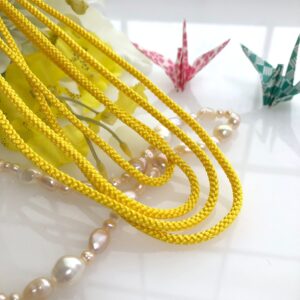 Yellow Silk round braided cord kumihimo Japanese silk cord/3mm/1 meter “Edo-uchi-himo” 8 strand braid/for jewelry/ Kyoto kumihimo/ #14$17 USD
Yellow Silk round braided cord kumihimo Japanese silk cord/3mm/1 meter “Edo-uchi-himo” 8 strand braid/for jewelry/ Kyoto kumihimo/ #14$17 USD -
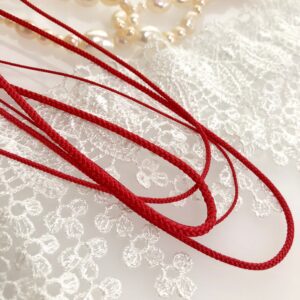 Red Silk round braided cord kumihimo Japanese silk cord/0.7mm~2mm/1 meter “Edo-uchi-himo” 8 strand braid/for jewelry/ Kyoto kumihimo/ #51Price range: $7 through $9 USD
Red Silk round braided cord kumihimo Japanese silk cord/0.7mm~2mm/1 meter “Edo-uchi-himo” 8 strand braid/for jewelry/ Kyoto kumihimo/ #51Price range: $7 through $9 USD -
 Black Silk round braided cord kumihimo Japanese silk cord/0.7mm~2mm/1 meter Edo-uchi-himo 8 strand braid/for jewelry/ Kyoto kumihimo/ #44Price range: $7 through $9 USD
Black Silk round braided cord kumihimo Japanese silk cord/0.7mm~2mm/1 meter Edo-uchi-himo 8 strand braid/for jewelry/ Kyoto kumihimo/ #44Price range: $7 through $9 USD
